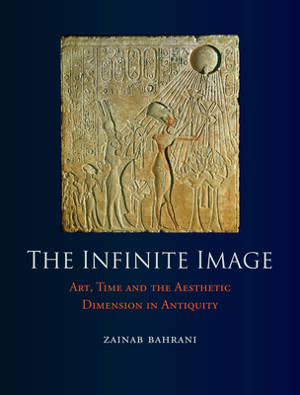
Bedankt voor het vertrouwen het afgelopen jaar! Om jou te bedanken bieden we GRATIS verzending (in België) aan op alles gedurende de hele maand januari.
- Afhalen na 1 uur in een winkel met voorraad
- Gratis thuislevering in België
- Ruim aanbod met 7 miljoen producten
Bedankt voor het vertrouwen het afgelopen jaar! Om jou te bedanken bieden we GRATIS verzending (in België) aan op alles gedurende de hele maand januari.
- Afhalen na 1 uur in een winkel met voorraad
- Gratis thuislevering in België
- Ruim aanbod met 7 miljoen producten
Zoeken
The Infinite Image
Art, Time and the Aesthetic Dimension in Antiquity
Zainab Bahrani
Hardcover | Engels
€ 54,45
+ 108 punten
Omschrijving
In the ancient civilizations of the Near East and Mediterranean, images were used as a way to create reality and reach out to the infinite. Reviving the fascination that gripped the avant-garde and the surrealists when confronted with the arts of the ancient Near East, The Infinite Image presents a radical new reading of Mesopotamian art as an aesthetic realm defined by objects that transcend time in order to carry traces of the past into the present. Zainab Bahrani's book opens in the early twentieth century, when artists and intellectuals like Alberto Giacometti, Henry Moore, and Georges Bataille were captivated by the ancient sculptures they encountered in European museums--before the question of the aesthetic in ancient art was rejected by rationalist scientific archaeology later in the century. She then travels back through the writings of Derrida, Hegel, Kant, and Plato to Mesopotamia, using these thinkers to argue that ancient images formed an aesthetic dimension that was both historical and evolving. She also addresses issues of the politics of cultural heritage important to Near Eastern art in the context of the wars in Iraq and Afghanistan and current instabilities in the Middle East. With over one hundred illustrations, The Infinite Image will be necessary reading for anyone interested in the questions at the center of contemporary history and the anthropology of art.
Specificaties
Betrokkenen
- Auteur(s):
- Uitgeverij:
Inhoud
- Aantal bladzijden:
- 240
- Taal:
- Engels
Eigenschappen
- Productcode (EAN):
- 9781780232775
- Verschijningsdatum:
- 15/08/2014
- Uitvoering:
- Hardcover
- Formaat:
- Genaaid
- Afmetingen:
- 193 mm x 251 mm
- Gewicht:
- 1043 g

Alleen bij Standaard Boekhandel
+ 108 punten op je klantenkaart van Standaard Boekhandel
Beoordelingen
We publiceren alleen reviews die voldoen aan de voorwaarden voor reviews. Bekijk onze voorwaarden voor reviews.












